In a part of old Gifu Town, close to where a natural moat around Oda Nobunaga’s Gifu Castle is formed by the wide Nagara River, is the Temple of Sofuku-ji. It is the official Oda clan temple in Gifu, and a temple with blood on the ceiling.
One of the Mino (Gifu) Thirty-Three Kannon temples, the Sofuku-ji was originally known as the Kousai-ji and was founded in the mid to late 1400’s. Due to repeated flooding, the temple was rebuilt on its present location in 1511, and renamed Sofuku-ji in 1517.
Warlord Oda Nobunaga, master of Owari Province (western Aichi Prefecture) brought down the great Imagawa Yoshimoto in 1560 in the Battle of Okehazama, greatly increasing his power and prestige. He soon set his sights on the northern neighboring province of Mino (modern-day Gifu Prefecture), the home territory of his wife, Princess Noh, and the lands of his father-in-law, Saito Dosan. Nobunaga would seize the Saito clan’s famed Inabayama Castle in 1567, when Dosan’s grandson, the weak-willed Saito Tatsuoki was in control. Nobunaga then based himself in the Saito ’s castle, and re-named it Gifu. Once there, he made the Sofuku-ji his Gifu family temple. From here, Nobunaga commenced his dream of unifying the nation under one ruler, and bringing the peace to the nation torn apart from constant warfare.
Nobunaga’s Grave
Japan was on the verge of unification in 1582 when Nobunaga was struck down, attacked and killed while staying in Kyoto by his own trusted general, Akechi Mitsuhide in the Honno-ji Incident. There are around 20 memorial grave sites dedicated to Nobunaga across the country, yet the Sofuku-ji temple is one of the better recognized graves. Upon his death, a number of Nobunaga’s personal items were quickly collected and preserved in the Sofuku-ji Temple by his concubine, Onabe, who also oversaw the founding of a shrine featuring the mortuary tablets of Nobunaga and his eldest son, Nobutada, also killed by the Akechi. Many of their personal possessions became treasures of the temple.


Among the effects kept by the temple is a letter written by Onabe to the Sofuku-ji. A copy of one letter is dated June 6, 1582, four days after Nobunaga’s death in the Honno-ji Incident. Another undated letter is addressed to Nobunaga’s general, Niwa Nagahide. Yet another letter is one written by Nobunaga himself to his son Nobukatsu on Nobukatsu’s premature attack, and subsequent failure to capture Ise Province (Mie Prefecture). The livid Nobunaga threatens to disown his son in the hastily yet tersely written missive. There are letters signed by Nobunaga, even a signed calligraphy by the warlord. A much-treasured clock tower, and a remaining dolphin-like shachihoko rooftop ornament from the top of Nobunaga’s former Kiyosu Castle is also kept at the Sofuku-ji.
The Ceiling of Blood
The wooden ceiling of the Sofuku-ji has what appears to be aged water stains on many of the boards, however these are not water, but blood stains. Oda Nobunaga’s grandson Oda Hidenobu, known as Samboshi in his childhood, and first brought to historical fame when used by Toyotomi Hideyoshi as a pawn to usurp Oda power at the Kiyosu Kaigi (Kiyosu Conference) following Nobunaga’s death in 1582, was the lord of Gifu Castle when the Battle of Sekigahara took place in 1600. Being allied with the Western cause under Ishida Mitsunari, Hidenobu’s Gifu Castle soon came under attack and was destroyed in a single day by Eastern forces samurai led by Ikeda Terumasa and Fukushima Masanori.
The final defenders of Gifu Castle were all cut down. The floorboards on which they died were stained with their blood. Following the battle, many remaining parts of Gifu Castle were recycled, used for the construction of other castles and temples. The floorboards on which the samurai of Gifu Castle had died were sent to the Oda clan temple, and in memory of those fallen samurai, the unwashed planks became the Sofuku-ji’s ceiling boards. Such ceilings are known as Chitenjo, and can be seen in a very select few temples across Japan.
Because the ceiling boards were not used in the same order as they had lain on the floor of Gifu Castle, some of the stains are difficult to make out exactly what they are, but looking carefully at the ceiling one can make out the imprints of armor chain mail and the folded pleats of the hakama worn under the armor, along with bloody hand, arm, body and footprints.
The Sofuku-ji is one of the leading training centres for Buddhist monks, and as such rarely opens it’s doors to the public. In the heart of Gifu City, it remains a quiet temple, surrounded by beautiful gardens, and the spiritual resting place of the first of the Unifiers of Japan, Oda Nobunaga.
Samurai History & Culture Japan is a reader-supported publication. To receive regular posts and support my work, please consider becoming a paid subscriber.

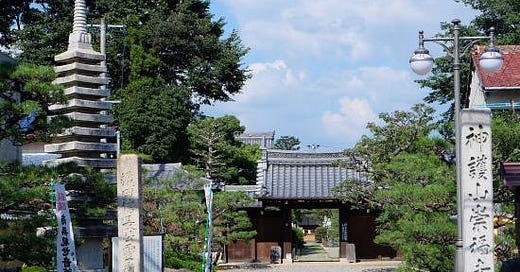



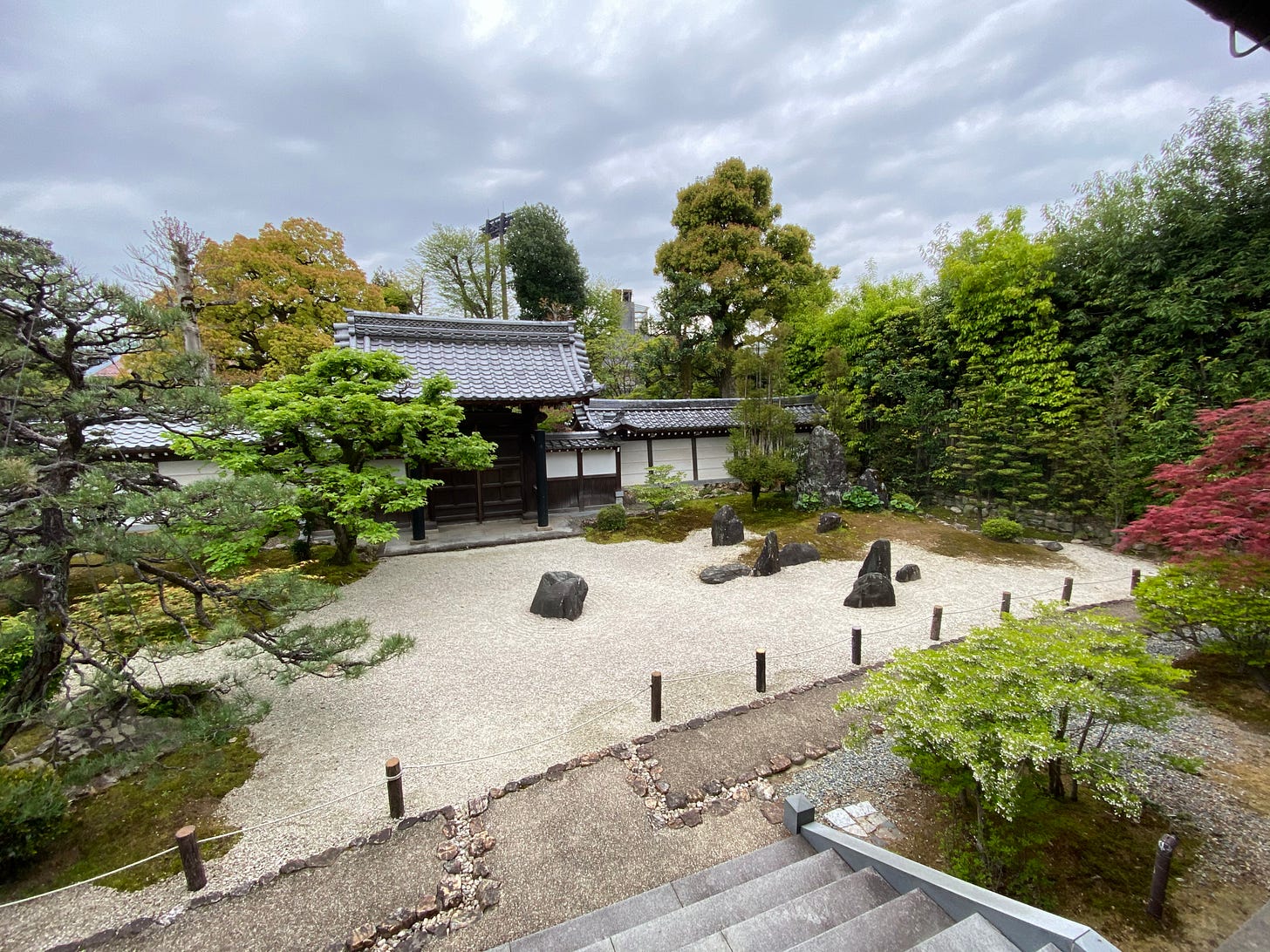


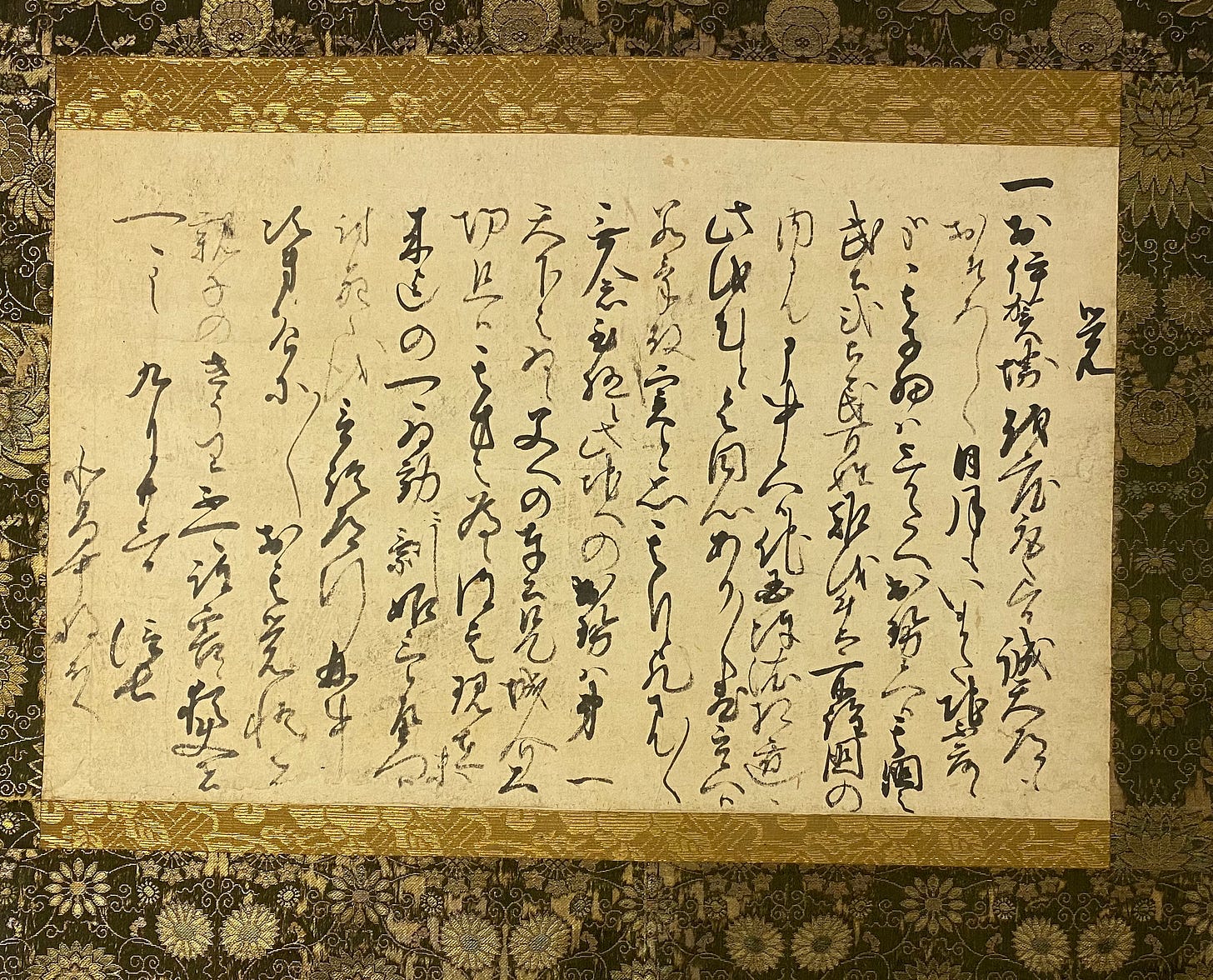
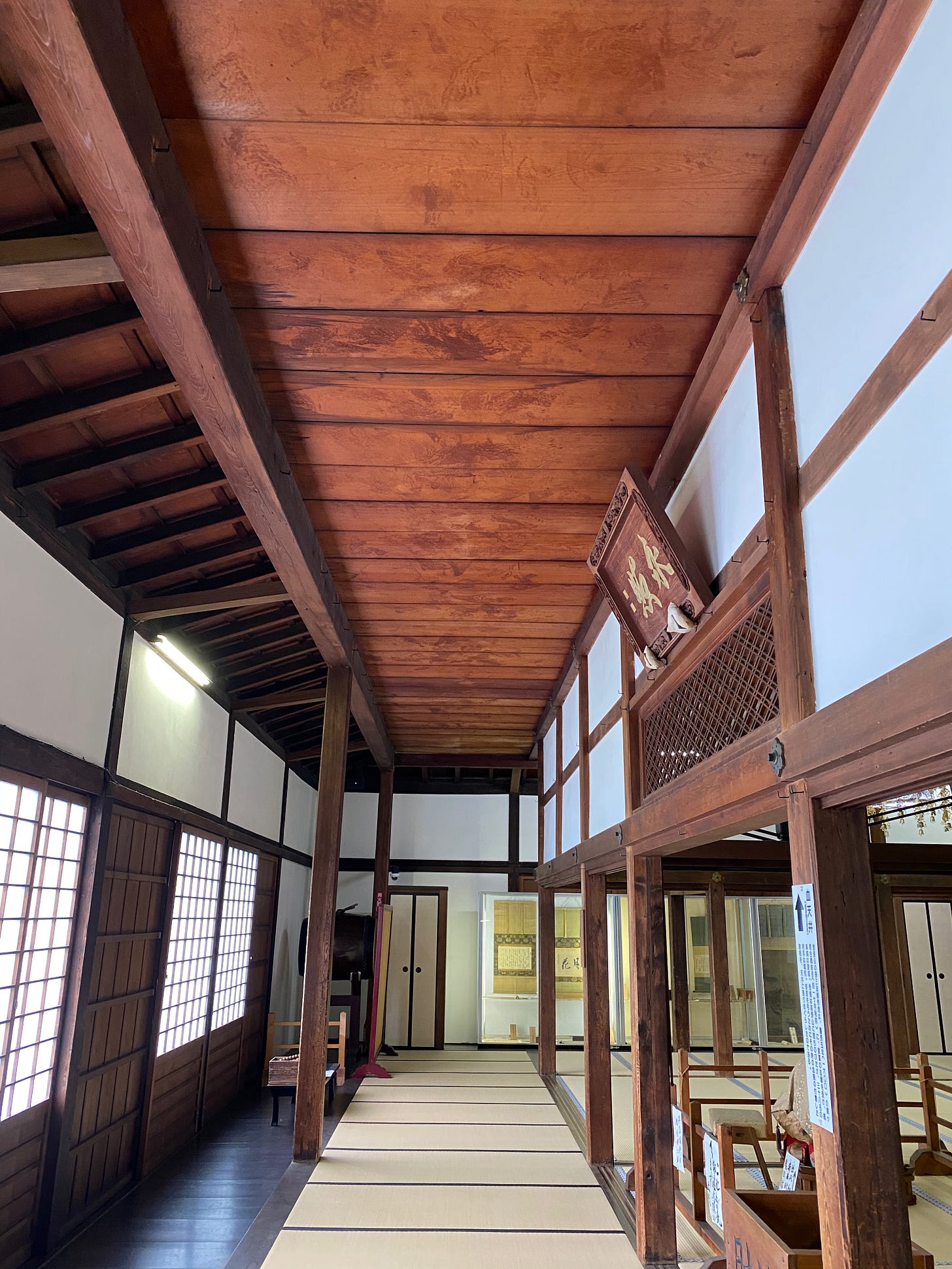

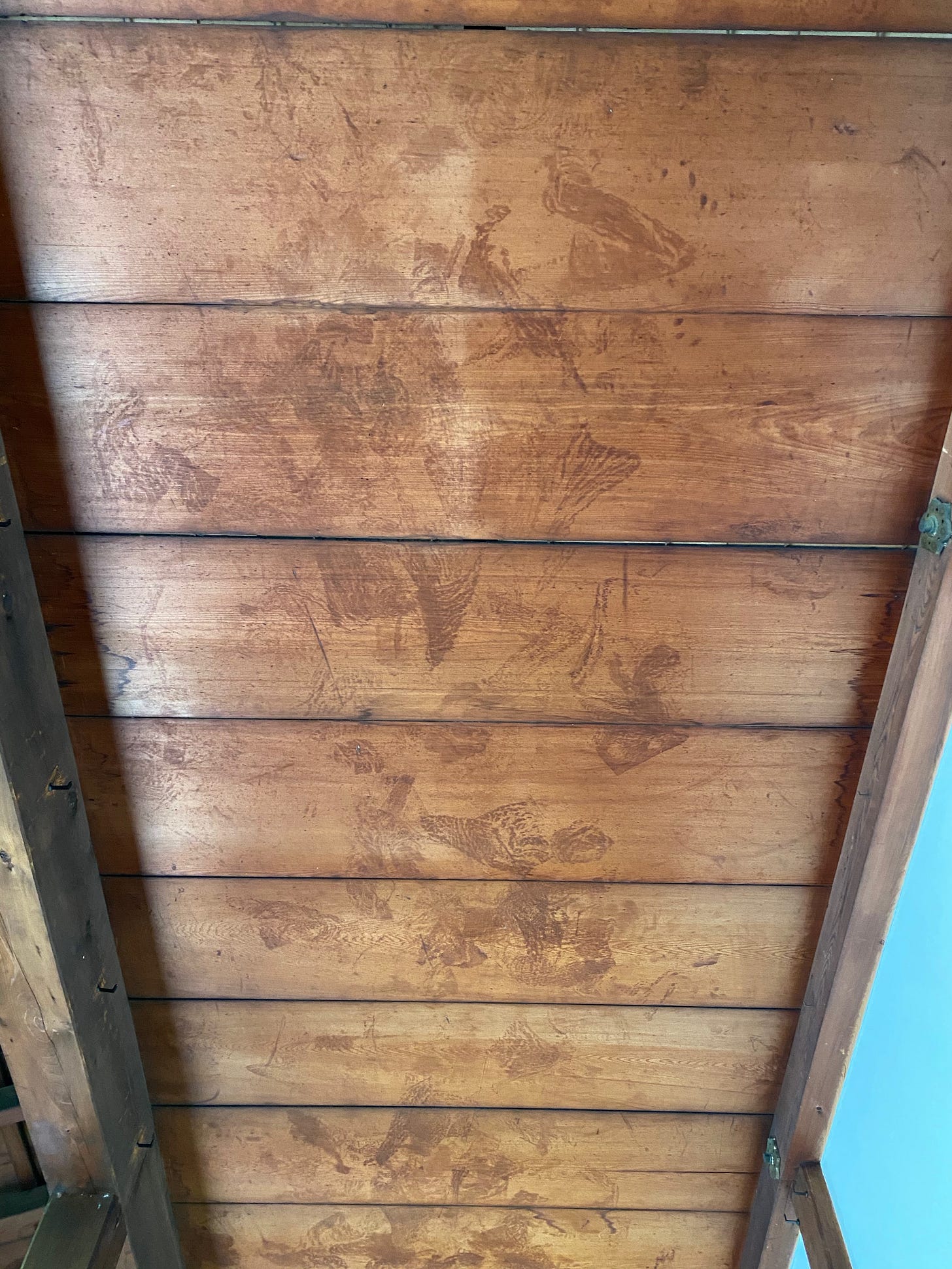
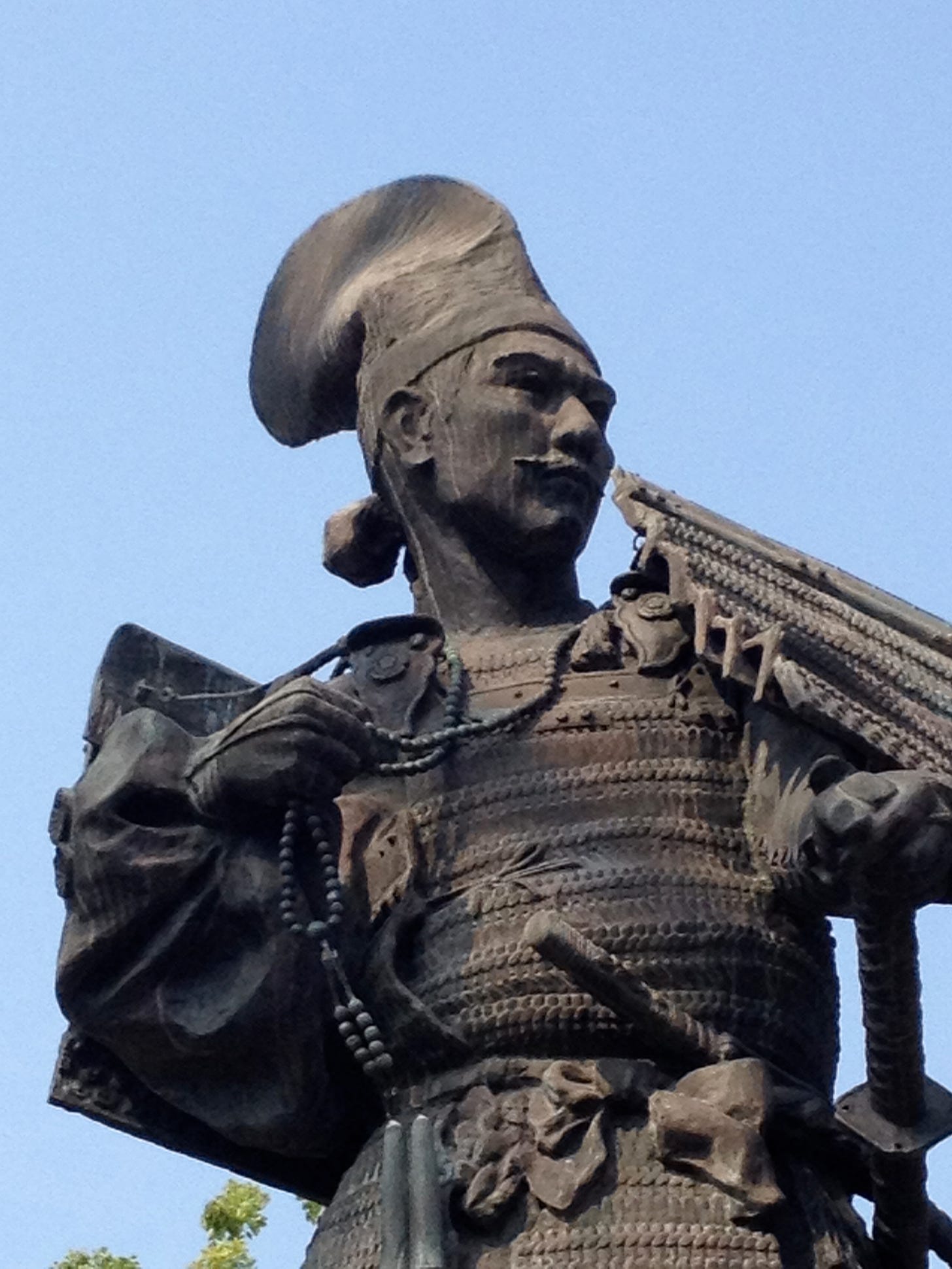
Great read & pics, TY!